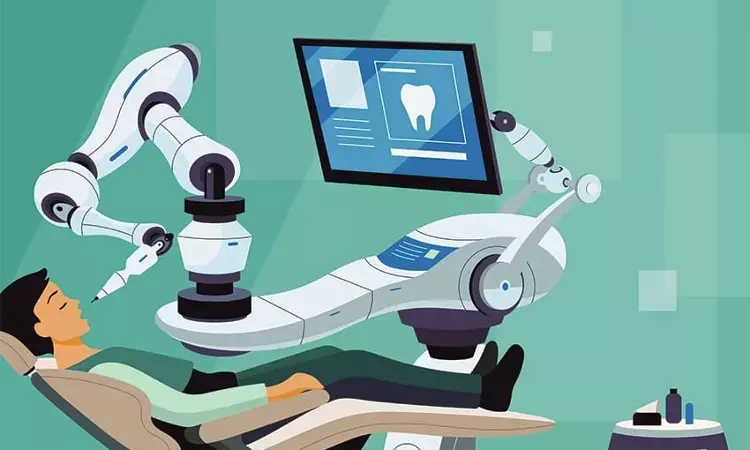- Home
- Medical news & Guidelines
- Anesthesiology
- Cardiology and CTVS
- Critical Care
- Dentistry
- Dermatology
- Diabetes and Endocrinology
- ENT
- Gastroenterology
- Medicine
- Nephrology
- Neurology
- Obstretics-Gynaecology
- Oncology
- Ophthalmology
- Orthopaedics
- Pediatrics-Neonatology
- Psychiatry
- Pulmonology
- Radiology
- Surgery
- Urology
- Laboratory Medicine
- Diet
- Nursing
- Paramedical
- Physiotherapy
- Health news
- Fact Check
- Bone Health Fact Check
- Brain Health Fact Check
- Cancer Related Fact Check
- Child Care Fact Check
- Dental and oral health fact check
- Diabetes and metabolic health fact check
- Diet and Nutrition Fact Check
- Eye and ENT Care Fact Check
- Fitness fact check
- Gut health fact check
- Heart health fact check
- Kidney health fact check
- Medical education fact check
- Men's health fact check
- Respiratory fact check
- Skin and hair care fact check
- Vaccine and Immunization fact check
- Women's health fact check
- AYUSH
- State News
- Andaman and Nicobar Islands
- Andhra Pradesh
- Arunachal Pradesh
- Assam
- Bihar
- Chandigarh
- Chattisgarh
- Dadra and Nagar Haveli
- Daman and Diu
- Delhi
- Goa
- Gujarat
- Haryana
- Himachal Pradesh
- Jammu & Kashmir
- Jharkhand
- Karnataka
- Kerala
- Ladakh
- Lakshadweep
- Madhya Pradesh
- Maharashtra
- Manipur
- Meghalaya
- Mizoram
- Nagaland
- Odisha
- Puducherry
- Punjab
- Rajasthan
- Sikkim
- Tamil Nadu
- Telangana
- Tripura
- Uttar Pradesh
- Uttrakhand
- West Bengal
- Medical Education
- Industry
Robot technology in dentistry shows promise, finds Study

The usage of open-source software for robot control and the design of robots specifically for dental usage, in some recent articles, might be promising, suggests a study published in the Dental Materials.
Robot technology was most frequently found in the fields of orthodontics and implantology.
A group of researchers from the Netherlands conducted a study to provide dental practitioners and researchers with a comprehensive and transparent evidence-based overview of physical robot initiatives in all fields of dentistry.
Articles published since 1985 concerning primary data on physical robot technology in dentistry were selected. Characteristics of the papers were extracted such as the respective field of dentistry, year of publication as well as a description of its usage. Bibliographic databases PubMed, Embase, and Scopus were searched. A hand search through reference lists of all included articles was performed.
The search timeline was between January 1985 and October 2020. All types of scientific literature in all languages were included concerning fields of dentistry ranging from student training to implantology. Robot technology solely for the purpose of research and maxillofacial surgery were excluded. In total, 94 articles were included in this systematic review.
This study provides a systematic overview of initiatives using robot technology in dentistry since its very beginning. While there were many interesting robot initiatives reported, the overall quality of the literature, in terms of clinical validation, is low. Scientific evidence regarding the benefits, results and cost-efficiency of commercially available robotic solutions in dentistry is lacking.
The rise in availability of open-source control systems, compliant robot systems and the design of dentistry-specific robot technology might facilitate the process of technological development in the near future. Thus, the authors are confident that robotics will provide useful solutions in the future but, strongly, encourage an evidence-based approach when adapting to new (robot) technology.
Reference:
Robot technology in dentistry, part two of a systematic review: an overview of initiatives by Tom C.T.van Riet published in the Dental Materials.
https://doi.org/10.1016/j.dental.2021.06.002
Dr. Shravani Dali has completed her BDS from Pravara institute of medical sciences, loni. Following which she extensively worked in the healthcare sector for 2+ years. She has been actively involved in writing blogs in field of health and wellness. Currently she is pursuing her Masters of public health-health administration from Tata institute of social sciences. She can be contacted at editorial@medicaldialogues.in.
Dr Kamal Kant Kohli-MBBS, DTCD- a chest specialist with more than 30 years of practice and a flair for writing clinical articles, Dr Kamal Kant Kohli joined Medical Dialogues as a Chief Editor of Medical News. Besides writing articles, as an editor, he proofreads and verifies all the medical content published on Medical Dialogues including those coming from journals, studies,medical conferences,guidelines etc. Email: drkohli@medicaldialogues.in. Contact no. 011-43720751


